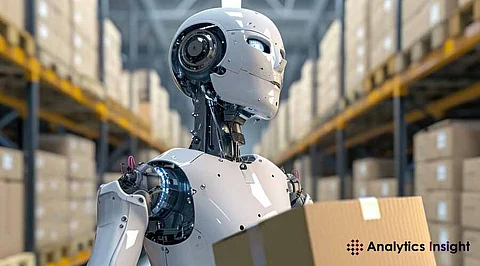

Amazon is making a bold bet in robotics, expecting its multibillion-dollar investment to drive major cost savings shortly as the tech giant accelerates automation across its vast retail network while managing rising AI-related expenses.
The Seattle-based business is estimated to spend as much as $25 billion on its retail infrastructure, such as constructing sophisticated robotics-powered warehouses, in a bid to increase efficiency and speed of delivery. This follows Amazon experiencing increasing competition from cheap upstarts such as China’s Temu.
While much of Amazon’s projected $100 billion capital expenditure for the year will go into AI-based projects like computing infrastructure, analysts estimate that about a quarter of the spending will go into its e-commerce segment, with a heavy emphasis on automation.
In an interview with the Financial Times, Tye Brady, chief technologist at Amazon Robotics, said, “We are witnessing firsthand how impactful this technology is in reshaping our daily operations.”
He further emphasised the company’s commitment to further investment in automation.
According to sources, Amazon’s fulfillment center in Shreveport, Louisiana, is already demonstrating the cost-saving potential of automation.
In the six-month-old, 3 million-square-foot warehouse, robots are involved in every step of completion, allowing for ten times more automation than in the last generation of warehouses and assisting Amazon in saving 25 percent of costs.
According to industry experts, humanoid robots are subjected to more complex problems than those affecting their industrial robot counterparts.
“Legacy industrial robotic arms that are outfitted with vision systems can perform by way of pre-programmed programmes since operations within a factory are repetitive and end-focused,” said an expert.
But experts point out that sending humanoid robots into everyday environments is much more difficult. In contrast to the controlled factory environment with uniform tasks, homes are dynamic environments where responsibilities differ greatly, so automation is much more complicated.
Amazon has already cut more than 27,000 jobs in the wake of the COVID-19 pandemic and has either closed or delayed scheduled warehouses after a rapid expansion during government-mandated lockdowns to keep up with the surge in online orders.
Its cost-cutting emphasis has also allowed it to make huge investments in data centre infrastructure as it races Google and Microsoft in AI, powering the explosive growth of its extremely lucrative Amazon Web Services business.
By Morgan Stanley estimates, Amazon's investment in next-generation robotics-infused warehouses would result in a whopping $10 billion in cost savings annually within the decade.
The firm's most sophisticated fulfillment center in Shreveport, Louisiana, is a showcase for automation potential. The 3-million-square-foot center opened in September and combines robots at each step of fulfillment, reducing costs by 25% after a tenfold robotics boost over earlier warehouse designs.
Despite spending roughly $1.2 billion since 2019 to upskill staff, Amazon continues to face labour market challenges. The firm increasingly relied on automation to fix these problems, especially in warehouse operations.
Eva Ponce, a director at the MIT Center for Transportation & Logistics, pointed out that labour shortages are speeding up the implementation of automation in the sector. In order to automate processes and meet delivery targets, she continued, Amazon is placing a strong emphasis on technology and deploying robots rapidly.
"Labour shortages are a chronic issue, fuelling investment in automation," Ponce stated. "Businesses are prioritizing productivity gains, and for Amazon, cutting delivery times is still a top priority."
Amazon's robotics innovation tradition spans years, with more than 750,000 mobile drive units deployed since its acquisition of robotics firm Kiva Systems in 2012.
Recently, the firm has launched Proteus, a completely autonomous lift truck that guides itself around warehouses through the use of AI-based sensor technology.
To test hundreds of simulated conditions before autonomous robots go into full use in real operations. Amazon has also partnered with chipmaker Nvidia to build “digital twins” of its warehouses. Along with reducing costs, Amazon is revolutionising logistics and warehousing in the age of artificial intelligence by making automation central to its strategy for efficiency.
